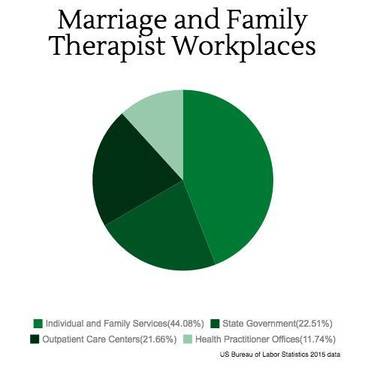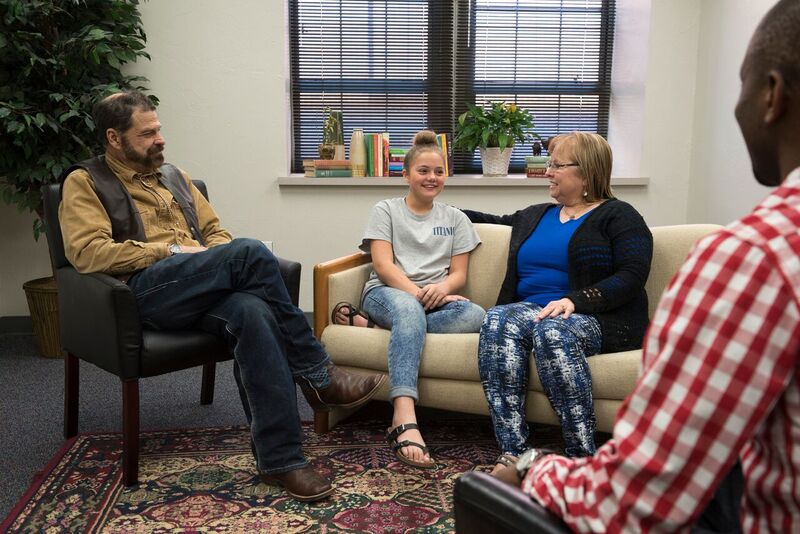Career Opportunities in Marriage and Family Therapy
October 10, 2016
If you’re interested in Marriage and Family Therapy as a career path, you likely want to know what life will be like after getting your degree and licensure or certifications.
The federal government recognizes Family Therapists as qualified mental health providers and the Public Health Service Act recognizes Marriage and Family Therapy as a core mental health profession under the Health Professional Shortage Area. Marriage and Family Therapists (MFTs) generally build a family-oriented treatment approach to health care that encompasses mental, emotional, behavioral and interpersonal disorders.
Areas of Employment for MFTs
Marriage and Family Therapists work in a variety of settings, including social service agencies, family services, inpatient and outpatient mental health and substance abuse centers, hospitals, federal, state, city and tribal government organizations, schools, religious organizations and private practice.
While MFTs work at many different places, the work they do is similar in that they work with individuals, couples
You may work with couples and families together, or you may work with individuals to improve relationship issues that can affect the family dynamic and communication between loved ones. You can also choose to work with a specific group of people, such as with teenagers, seniors or the incarcerated.

Religious Settings
You may work in a church or similar setting. According to the American Association for Marriage and Family Therapists (AAMFT), 25 percent of MFTs work in faith-based settings. With OBU’s MFT degree, you can help individuals, couples and families work through any issue in such a way that honors faith as an important part of their lives. OBU MFT students are trained to work with clients from a biblical worldview that falls in line with Christian values.
Government
You may work in government offices, the military, a non-profit, or a for-profit agency. You’ll likely provide counseling and social services to families, seniors, youth and more. According to the Bureau of Labor Statistics (BLS), MFTs working for the government are typically paid the highest salary.
Hospitals
In a hospital setting, you’d work in tandem with doctors, nurses and other hospital staff and may be referred to as a “Medical Family Therapist.” MFTs also help families work through issues common in hospitals, such as terminal illness, diabetes
Private Practice
In a private practice. you’d likely work in an office during the day, but hours can vary to accommodate clients’ work schedules. Some MFTs split their work between private practice and other locations.
Schools
You could work at any level of schooling, from elementary schools to colleges. If you pursue a doctorate degree after earning your master’s, you could work as a professor, either for undergraduate or graduate students.
Substance Abuse Centers
While your focus would still be on addressing issues with the family in mind, you would also provide therapy for, and education about, addiction. You may address multiple addictions, or choose to focus on one specific type of addiction like alcohol abuse.
Mental Health Center
You may provide counseling to families dealing with schizophrenia, anorexia, depression or other severe mental health disorders.
The Future of Marriage and Family Therapy and Salaries
Marriage and Family Therapy is a rapidly growing field. The BLS predicts it will grow 23 percent by 2026, which is much faster than average growth for a profession. More than 6.1 million people annually are seen by Marriage and Family Therapists, according to the AAMFT.
In 2016, according to the BLS, there were 41,500 jobs for MFTs nationally.
U.S. News & World Report ranks Marriage and Family Therapy as the #4 job in Best Social Services Jobs and #59 in The 100 Best Jobs. U.S. News & World Report takes things like salary, employment rate, job prospects and more into account when creating their rankings.
The 2017 median pay for MFTs working in the United States was $8,790 per
Marriage and Family Therapists in the top 10 percent may earn more than $81,960 annually, according to the BLS. Those working in private practice generally earn a higher income than their counterparts.
MFTs are also eligible to receive grants, loans, or compensation through the Department of Transportation, Department of Veterans Affairs, Department of Defense and Indian Health Service for services they provide.
If you think Marriage and Family Therapy is the right career for you, apply to our Marriage and Family Therapy graduate program.
